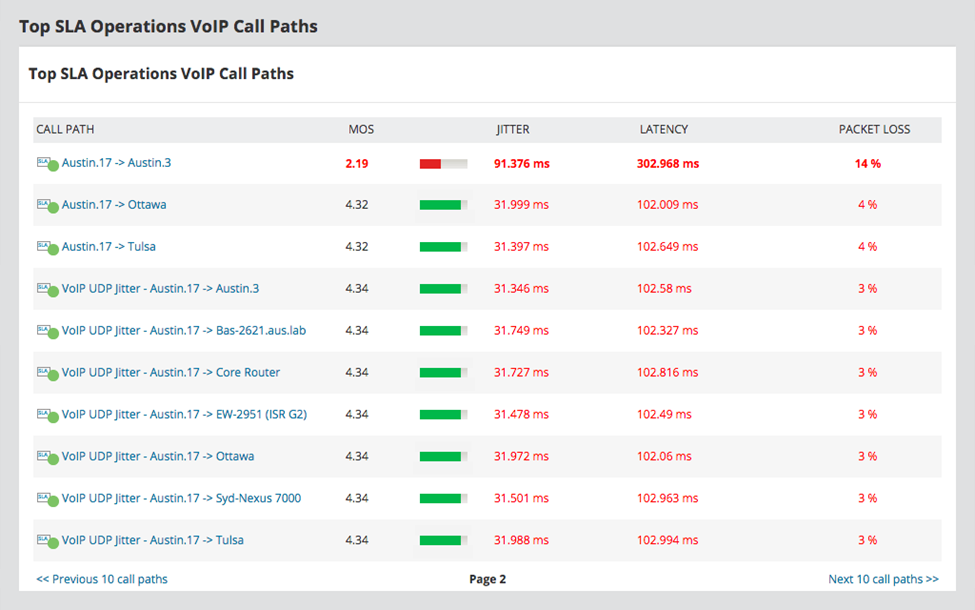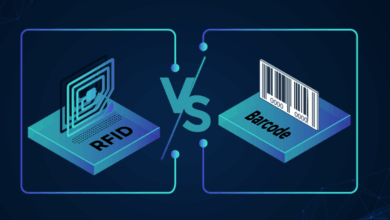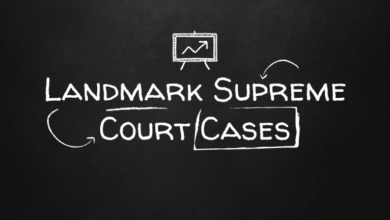VoIP Vendors Warn Old Rules for New Tech
VoIP vendors warn of old regulation for new technology, highlighting a critical mismatch between established telecommunications rules and the rapid evolution of Voice over Internet Protocol (VoIP). This creates significant challenges for companies trying to innovate and deliver cutting-edge services. Outdated regulations are hindering the development and adoption of this crucial technology, impacting everything from pricing to the very future of communication.
Existing regulations, often designed for traditional phone systems, struggle to keep pace with the complexities of VoIP. This creates a complex web of compliance issues and potential legal disputes. VoIP’s unique characteristics, like its reliance on internet infrastructure and decentralized nature, differentiate it substantially from older technologies, demanding a nuanced and modern regulatory framework.
Introduction to VoIP Vendor Concerns
VoIP, or Voice over Internet Protocol, has revolutionized telecommunications, enabling affordable and flexible communication across vast distances. This technology has experienced explosive growth, fueled by the increasing accessibility and affordability of high-speed internet. However, this rapid evolution has created a gap between the established regulatory frameworks and the innovative capabilities of VoIP.Outdated regulations, designed for traditional telecommunication models, are proving inadequate to address the unique features and challenges presented by VoIP.
This mismatch is causing significant concerns for VoIP vendors, hindering innovation and potentially stifling the full potential of this transformative technology. Addressing these regulatory hurdles is crucial for the continued growth and success of the VoIP industry.
VoIP Technology and its Rapid Evolution
VoIP’s evolution has been marked by a shift from circuit-switched networks to packet-switched networks, leading to significantly improved cost-effectiveness and scalability. This transition has allowed for features like video conferencing, instant messaging integration, and personalized call routing, pushing the boundaries of communication possibilities. The proliferation of smartphones and other mobile devices further accelerated the adoption of VoIP, making it a ubiquitous tool for personal and business communication.
Significance of Regulatory Frameworks in Telecommunications
Regulatory frameworks in telecommunications are essential for maintaining a stable and secure industry. They establish standards for quality of service, network access, and security. Clear regulations are crucial for protecting consumers, promoting fair competition, and ensuring that telecommunication services function efficiently and reliably. They also act as a foundation for the development and deployment of new technologies.
Challenges Faced by VoIP Vendors Due to Outdated Regulations
Existing regulations often struggle to adapt to the dynamic nature of VoIP. Licensing requirements, interconnection standards, and data privacy concerns can be particularly problematic for VoIP vendors operating across multiple jurisdictions. The complexity and ambiguity of these regulations can lead to legal uncertainties and compliance burdens, hindering investment and innovation in the sector.
Mismatch Between Existing Regulations and New Technologies
The fundamental difference between circuit-switched and packet-switched networks creates a major hurdle for VoIP vendors. Existing regulations, often designed for circuit-switched networks, don’t adequately address the unique characteristics of VoIP, such as the dynamic allocation of bandwidth and the decentralized nature of the internet. This disconnect can result in confusion regarding the classification and taxation of VoIP services, as well as the application of regulatory oversight.
Comparison of VoIP and Traditional Telecommunications Technologies
| Feature | Traditional Telecommunications | VoIP |
|---|---|---|
| Network Technology | Circuit-switched | Packet-switched |
| Bandwidth Allocation | Fixed | Dynamic |
| Regulatory Framework | Well-established, often jurisdiction-specific | Evolving, often lacking clarity on specific applications |
| Interconnection | Standardized protocols | Requires diverse, and sometimes non-standardized, protocols |
| Licensing | Clear, often sector-specific licensing | Can be unclear or lack specific VoIP licenses |
This table highlights the fundamental differences between traditional and VoIP technologies. The shift from fixed bandwidth allocation to dynamic allocation, and the varied approaches to interconnection, significantly impact the regulatory landscape, demanding a new approach to ensure fair competition and protect consumers.
Analysis of Existing Regulations: Voip Vendors Warn Of Old Regulation For New Technology
VoIP services, while revolutionizing communication, have encountered a significant hurdle in their regulatory landscape. Existing telecommunications laws, often crafted for traditional voice networks, are proving inadequate to address the unique characteristics and challenges of VoIP. This analysis delves into the intricacies of these regulations, highlighting their historical context, limitations, and the impact they have on VoIP vendors.Existing telecommunications regulations, while initially designed to manage traditional phone networks, are now grappling with the rapid evolution of digital communication technologies like VoIP.
These regulations were developed in an era when communication infrastructure was largely physical and centrally controlled, leading to inherent limitations when applied to the decentralized and internet-based nature of VoIP.
Key Aspects of Existing Telecommunications Regulations
Existing telecommunications regulations often encompass aspects like licensing requirements, network access, interconnection obligations, and pricing controls. These elements are crucial in maintaining a regulated and fair telecommunications market, but their application to VoIP presents a complex challenge. Historically, these regulations were intended to ensure fair competition, prevent monopolies, and protect consumers.
Historical Context of Regulations
Telecommunications regulations evolved alongside the development of the physical infrastructure. Early regulations focused on establishing standards for landline networks, ensuring universal service, and controlling the entry of new players. The goal was to manage the complexities of a centralized, physical network. The rapid shift to digital and internet-based communication has exposed inherent limitations in these frameworks.
Limitations and Shortcomings in the Context of VoIP
The fundamental shift from circuit-switched to packet-switched networks, a core component of VoIP, creates a significant disconnect between the existing regulations and the reality of VoIP operation. Existing regulations often struggle to address the decentralized, IP-based nature of VoIP traffic, leading to ambiguities and inconsistencies in their application.
VoIP vendors are understandably worried about outdated regulations struggling to keep pace with the rapid evolution of communication technology. Think about it – a recent bill making file sharing a felony highlights how quickly laws can become irrelevant in the digital age. This raises serious concerns about the potential for similar mismatches between existing legislation and cutting-edge VoIP services.
This new bill making file swapping a felony underscores the urgency of adapting legal frameworks to the ever-changing digital landscape, and VoIP providers are right to be concerned about how this might affect their business models.
Examples of Specific Regulations Posing Challenges
One key challenge for VoIP vendors is the issue of licensing. Regulations often mandate specific licenses for telecommunications providers, and the digital nature of VoIP blurs the lines between traditional telephony and internet services. This ambiguity makes it difficult for VoIP vendors to determine the appropriate regulatory framework. Interconnection requirements also pose a challenge, especially when dealing with legacy networks and ensuring compatibility with diverse platforms.
Regulations Impacting VoIP: A Summary Table
| Regulation Name | Year Enacted | Key Provisions |
|---|---|---|
| Telecommunications Act of 1996 (USA) | 1996 | Promoted competition and deregulation, but its provisions haven’t fully adapted to the VoIP landscape. |
| European Telecommunications Regulations | Various | Often dictate licensing requirements and interconnection obligations, which can create hurdles for VoIP providers operating across multiple EU countries. |
| National Telecommunications Regulations (Specific Country) | Specific Year | Different countries have unique regulatory structures impacting VoIP. |
Impact on VoIP Vendors
Outdated regulations pose a significant challenge for VoIP vendors, creating financial hurdles and limiting their ability to innovate and adapt to the evolving telecommunications landscape. The mismatch between existing legal frameworks and the dynamic nature of VoIP technology necessitates a reevaluation and modernization of these regulations. This is crucial to foster competition and ensure the continued growth of the VoIP industry.The current regulatory environment often fails to account for the unique characteristics of VoIP, leading to complexities in pricing models and service offerings.
This discrepancy between regulation and technological reality impacts the financial viability and operational efficiency of VoIP vendors, necessitating innovative approaches to address the gaps.
Financial Implications of Outdated Regulations
VoIP vendors face substantial financial burdens due to the complexity and ambiguity inherent in outdated regulations. Compliance costs can be substantial, including legal fees, staff training, and system modifications. This can divert resources away from innovation and customer service improvements, potentially impacting profitability. For example, some regulations might require VoIP providers to maintain specific levels of capital reserves or invest in infrastructure beyond the current technological needs, thus increasing operational expenses.
Impact on Pricing Models and Service Offerings
Outdated regulations often lead to convoluted pricing models for VoIP services. The need to comply with various regulatory mandates, including those related to call routing, taxation, and data privacy, can increase the cost of services. This, in turn, often translates into higher prices for consumers, impacting market competitiveness. Some regulations may limit the ability of VoIP providers to offer competitive pricing or innovative services due to compliance requirements, leading to a potential reduction in consumer choice.
Challenges in Adapting to the Regulatory Landscape
VoIP vendors face significant challenges in adapting to the regulatory landscape. Keeping up with evolving regulations, often with little notice or clarity, is demanding. Additionally, navigating the different regulatory frameworks across various jurisdictions can be complex and costly. The lack of a consistent regulatory framework across different countries presents an added hurdle for VoIP providers.
Potential for Legal Disputes and Regulatory Scrutiny
The ambiguity in existing regulations can lead to legal disputes between VoIP vendors and regulatory bodies. Misinterpretations of regulations or unintentional violations can result in costly fines or legal battles. Regulatory scrutiny can be particularly intense for new or innovative VoIP services, as they often fall outside the scope of existing regulations. This uncertainty can discourage investment and hinder the development of innovative solutions.
Creative Solutions and Strategic Planning
VoIP vendors are actively developing creative solutions and strategic plans to address these challenges. These include lobbying for regulatory reform, engaging with regulatory bodies to clarify ambiguities, and developing compliance-focused technological solutions. Partnerships with legal experts, regulatory consultants, and industry associations are crucial in navigating the complex regulatory landscape. Investing in robust legal and compliance teams allows vendors to better understand and comply with evolving regulations.
VoIP vendors are understandably worried about outdated regulations hindering the growth of new technologies. The complexities of adapting existing rules to modern VoIP services are a real challenge. Meanwhile, recent security vulnerabilities in Windows, like those highlighted in the latest windows flaws foretell worm threat article, show how quickly threats can emerge and how crucial it is to keep systems up-to-date.
These concerns underscore the need for regulatory bodies to adapt to the rapid evolution of technology, or risk stifling innovation in the VoIP sector.
Key Challenges, Potential Solutions, and Costs
| Challenge | Potential Solution | Estimated Cost |
|---|---|---|
| Compliance with outdated regulations | Engage with regulatory bodies to clarify ambiguities, update internal policies, and invest in compliance software | $50,000 – $500,000 (initial investment) + ongoing compliance costs |
| Navigating diverse regulatory frameworks across jurisdictions | Establish a global regulatory compliance team, utilize technology for streamlined compliance, and collaborate with regional experts | $100,000 – $1,000,000 (initial investment) + ongoing compliance costs |
| Adapting to evolving regulations | Establish a robust regulatory monitoring system, engage in continuous legal training for staff, and build agile compliance strategies | $25,000 – $250,000 (annual investment) |
Future of VoIP and Regulations
VoIP technology has rapidly evolved from a niche communication tool to a ubiquitous platform, transforming how we connect and collaborate. This evolution, however, has outpaced existing regulatory frameworks, creating a critical need for adaptation. The future of VoIP hinges on a regulatory environment that can keep pace with innovation while safeguarding consumer interests and maintaining a fair competitive landscape.The existing regulatory framework, often designed for older communication models, is struggling to adapt to the multifaceted nature of modern VoIP services.
This mismatch can lead to inconsistencies, ambiguity, and potential legal challenges for VoIP providers. Regulatory updates are essential to ensure the continued growth and innovation of the VoIP industry.
VoIP Technology Evolution Forecast
VoIP technology is projected to continue its rapid evolution. Cloud-based VoIP services are likely to become more prevalent, offering greater scalability, flexibility, and cost-effectiveness. Integration with other technologies, such as AI and IoT, will enhance functionalities like automated customer service and intelligent call routing. Furthermore, the rise of 5G and its potential for ultra-low latency will enable real-time communication experiences that are even more immersive and seamless.
Need for Regulatory Updates
Existing regulations are often tailored to traditional telecommunications models. They may not adequately address issues such as:
- Data privacy concerns: As VoIP services increasingly handle sensitive user data, robust privacy regulations are crucial to protect user information.
- Network security: The increasing reliance on VoIP networks for critical communications necessitates stringent security measures to mitigate potential cyber threats.
- Interoperability: Outdated regulations might hinder the interoperability of various VoIP platforms, limiting user choice and innovation.
These concerns necessitate a revision of existing regulations to accommodate the evolving nature of VoIP services.
Solutions to Bridge the Regulatory Gap
A multifaceted approach is needed to bridge the gap between outdated regulations and emerging VoIP services. This could include:
- Phased regulatory reforms: Instead of a complete overhaul, implementing phased regulatory reforms can allow for incremental adjustments to existing frameworks as new technologies emerge.
- International collaboration: Global standardization of VoIP regulations is crucial to ensure a seamless global experience for users and providers.
- Industry-led workshops: Collaborating with industry experts, VoIP providers, and regulatory bodies to develop practical guidelines and best practices can help address specific issues and ensure clarity.
Potential Areas for Regulatory Reform
Several areas require regulatory reform and modernization to benefit both VoIP vendors and consumers.
VoIP vendors are sounding the alarm about outdated regulations struggling to keep pace with new technology. Imagine a similar situation with display technology, like plasma screens, which are constantly evolving. Plasma screens and the future of display technology are a prime example of how quickly things change. This highlights the need for regulatory bodies to adapt and stay current with the rapid advancement of innovation, or risk hindering progress in areas like VoIP.
- Licensing and certification: Streamlining licensing procedures and establishing clear certification standards can ensure quality and accountability.
- Transparency in pricing: Clearer pricing structures for VoIP services can foster greater consumer understanding and prevent potential confusion or disputes.
- Consumer protection: Regulations should ensure clear consumer rights and dispute resolution mechanisms.
Potential Regulatory Changes
The following table Artikels potential regulatory changes to benefit VoIP vendors and consumers:
| Regulatory Area | Potential Change | Benefit to Vendors | Benefit to Consumers |
|---|---|---|---|
| Licensing | Streamlined application process, reduced bureaucratic hurdles | Faster deployment, reduced costs | Increased availability of services, lower prices |
| Data Privacy | Enhanced data protection standards, clear data handling policies | Compliance with regulations, reduced legal risks | Increased confidence in the security of their data |
| Interoperability | Promoting open standards and interoperability protocols | Wider reach, increased market share | Greater choice and flexibility in service providers |
Role of Industry Associations
Industry associations and advocacy groups play a critical role in shaping the future of VoIP regulations. They can:
- Represent the industry’s voice: Advocating for the needs and concerns of VoIP providers and consumers in regulatory discussions.
- Develop industry best practices: Creating standards and guidelines that promote ethical and responsible practices within the VoIP industry.
- Educate stakeholders: Providing clarity and understanding of evolving regulations to all stakeholders involved.
Illustrative Case Studies

Navigating the regulatory landscape for VoIP services can be tricky. Existing telecommunications regulations, often designed for traditional landline systems, are struggling to keep pace with the rapid evolution of VoIP technology. This has led to a number of challenges for VoIP vendors, and understanding these cases is crucial for appreciating the ongoing regulatory tension.
Specific Instances of Regulatory Hurdles
VoIP vendors have faced numerous hurdles as they try to adapt to changing regulations. These difficulties stem from the inherent differences between traditional telecommunications infrastructure and the decentralized, internet-based nature of VoIP. Often, regulations designed for landline services struggle to define the scope and accountability of VoIP providers.
Case Study 1: The “Interconnection” Quandary
A significant challenge for VoIP providers is ensuring interoperability with legacy systems. Interconnection rules, usually defined by national telecommunications authorities, dictate how VoIP services can connect with existing networks. This can be problematic when VoIP vendors must comply with complex interconnection agreements that might not fully reflect the VoIP service’s unique architecture. For instance, a VoIP vendor might face pressure to provide specific technical details about their infrastructure or to maintain certain network protocols that are not relevant to their service model.
The outcome of such disputes can vary, from delays in service deployment to significant financial burdens for the VoIP vendor.
Case Study 2: The “Regulatory Uncertainty” Issue
Another recurring issue involves the classification of VoIP services. Lack of clarity in regulations can create uncertainty about the appropriate licensing requirements and regulatory oversight. This ambiguity can lead to disputes about whether a VoIP service should be treated as a telecommunications service or a different type of online service. For example, a vendor offering VoIP services for international calls might encounter challenges in obtaining necessary permits if the regulations do not clearly define VoIP services in international contexts.
Resolution in these situations often requires lengthy legal battles and may not always result in clear guidelines for future cases. The uncertainty about classification is a common problem.
Summary Table of Case Studies
| Vendor | Regulation | Issue | Resolution |
|---|---|---|---|
| Example VoIP Vendor A | Interconnection Agreements | Compliance with complex technical requirements for connecting with legacy networks | Reached a settlement with the telecom authority, but faced delays in service rollout. |
| Example VoIP Vendor B | Service Classification | Uncertainty regarding licensing and regulatory oversight for international VoIP calls. | Obtained a favorable ruling in court that clarified the regulatory framework for their specific service model. |
Comparison with Other Technologies

The regulatory landscape for VoIP is often viewed in isolation, but its treatment under the law bears comparison with other rapidly evolving digital technologies. Understanding the similarities and differences in how cloud computing and the Internet of Things (IoT) are regulated provides valuable context for assessing the impact of existing and emerging regulations on VoIP. This comparison reveals potential blind spots in current approaches and underscores the need for adaptable and forward-thinking regulatory frameworks.
Regulatory Approaches to Emerging Technologies, Voip vendors warn of old regulation for new technology
VoIP, cloud computing, and IoT all share a common thread: their widespread adoption significantly impacts existing communication and data infrastructures. However, the nuances of their regulatory treatment vary. While all three have aspects of data security, privacy, and network neutrality concerns, the specific regulatory focuses and enforcement mechanisms differ. This variability is driven by the unique characteristics of each technology.
Similarities in Regulatory Concerns
Several common concerns emerge across these technologies. Data privacy is a key concern, as all three involve the transmission and storage of sensitive user information. Interoperability and network neutrality are also relevant, particularly for VoIP and cloud computing, which rely on shared infrastructure. Ensuring secure access and preventing malicious activities are crucial considerations for all three, although the specific risks and mitigation strategies differ based on the technology’s nature.
Differences in Regulatory Approaches
The regulatory approaches to VoIP, cloud computing, and IoT exhibit key differences. VoIP regulations often focus on telecommunications-specific aspects like licensing, interconnection, and consumer protection. Cloud computing regulations are more nuanced, encompassing data security, privacy, and cross-border data transfer. IoT regulations are emerging and often focus on device security, data management, and the potential for widespread network disruption.
Comparative Analysis
| Technology | Key Regulatory Focus | Specific Concerns | Regulatory Challenges |
|---|---|---|---|
| VoIP | Telecommunications licensing, interconnection, consumer protection | Call quality, spam, and fraud | Balancing innovation with maintaining network integrity |
| Cloud Computing | Data security, privacy, data localization, and cross-border data transfer | Data breaches, unauthorized access, and liability | Defining clear responsibilities between cloud providers and users |
| IoT | Device security, data management, and potential for widespread network disruption | Security vulnerabilities, data privacy, and scalability | Standardizing security protocols and addressing the sheer volume of devices |
The table above provides a concise overview of the regulatory frameworks. It highlights the distinctions in regulatory focus and the unique challenges each technology presents. Further research is needed to delve into the specific regulations governing each technology within different jurisdictions.
Implications for Innovation and Adoption
The varying regulatory approaches have significant implications for innovation and adoption. A rigid or overly prescriptive regulatory environment for VoIP, cloud computing, or IoT can stifle innovation by creating uncertainty and increasing compliance costs. Conversely, a lack of regulation can lead to vulnerabilities and potentially harm consumers. The optimal regulatory approach must strike a balance between fostering innovation and ensuring user safety.
Ultimate Conclusion
In conclusion, the clash between antiquated regulations and the innovative nature of VoIP poses a significant threat to the industry’s growth. Vendors are facing substantial financial implications, adapting to a rapidly changing landscape, and navigating complex legal hurdles. Addressing this urgent need for regulatory reform is critical to fostering innovation and ensuring the future of VoIP technology. The future of VoIP depends on the willingness of policymakers to modernize regulations and create a supportive environment for technological advancement.






